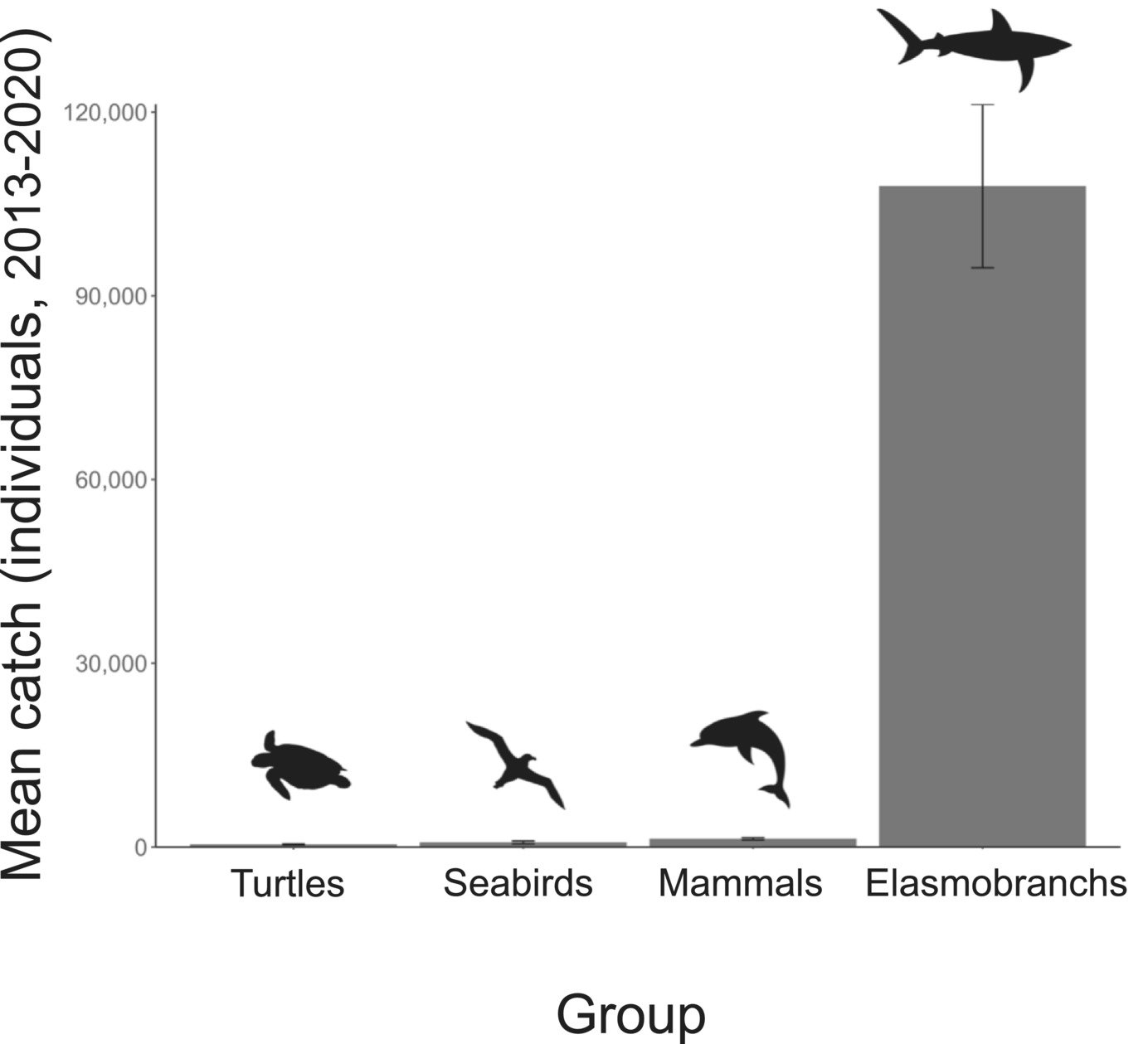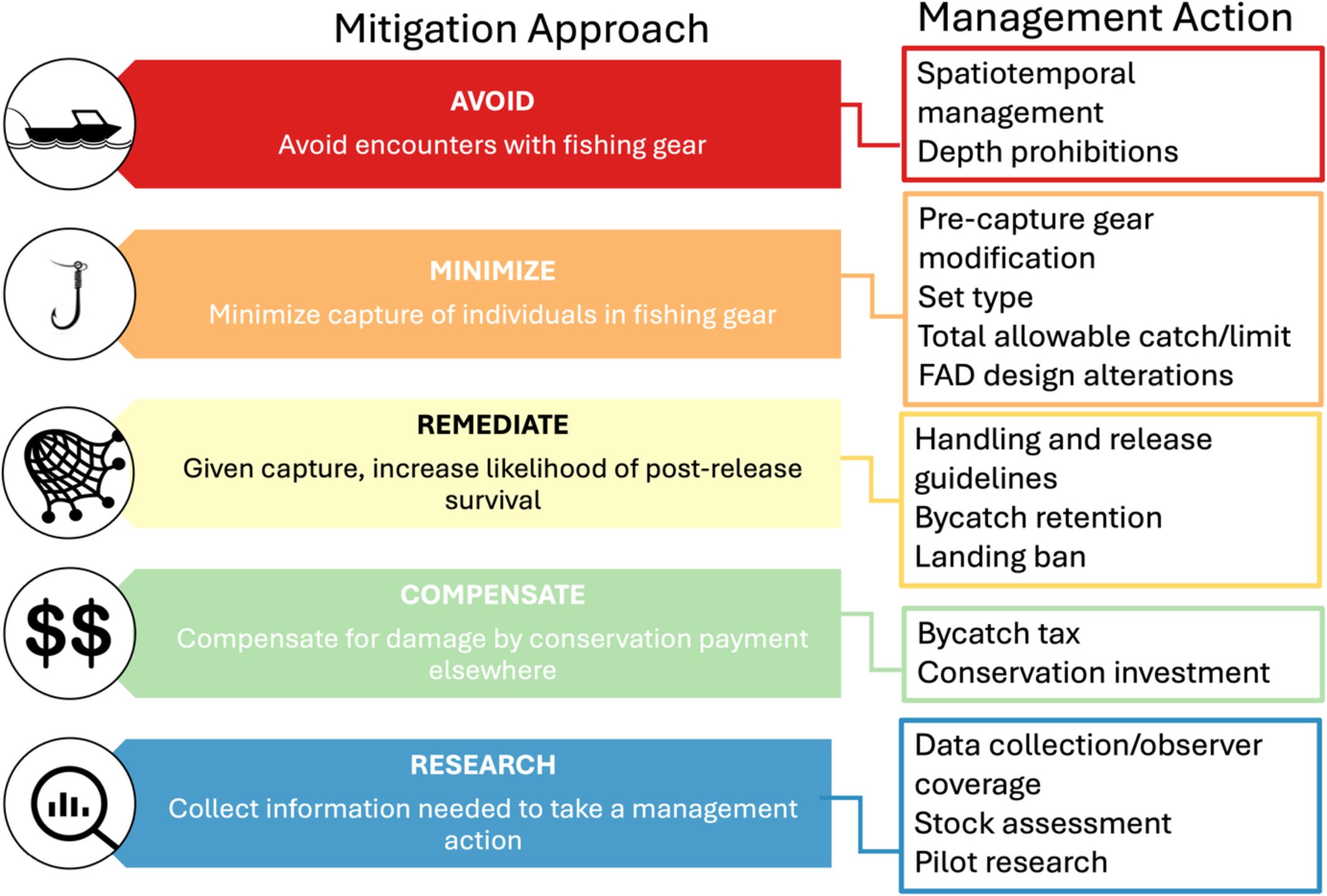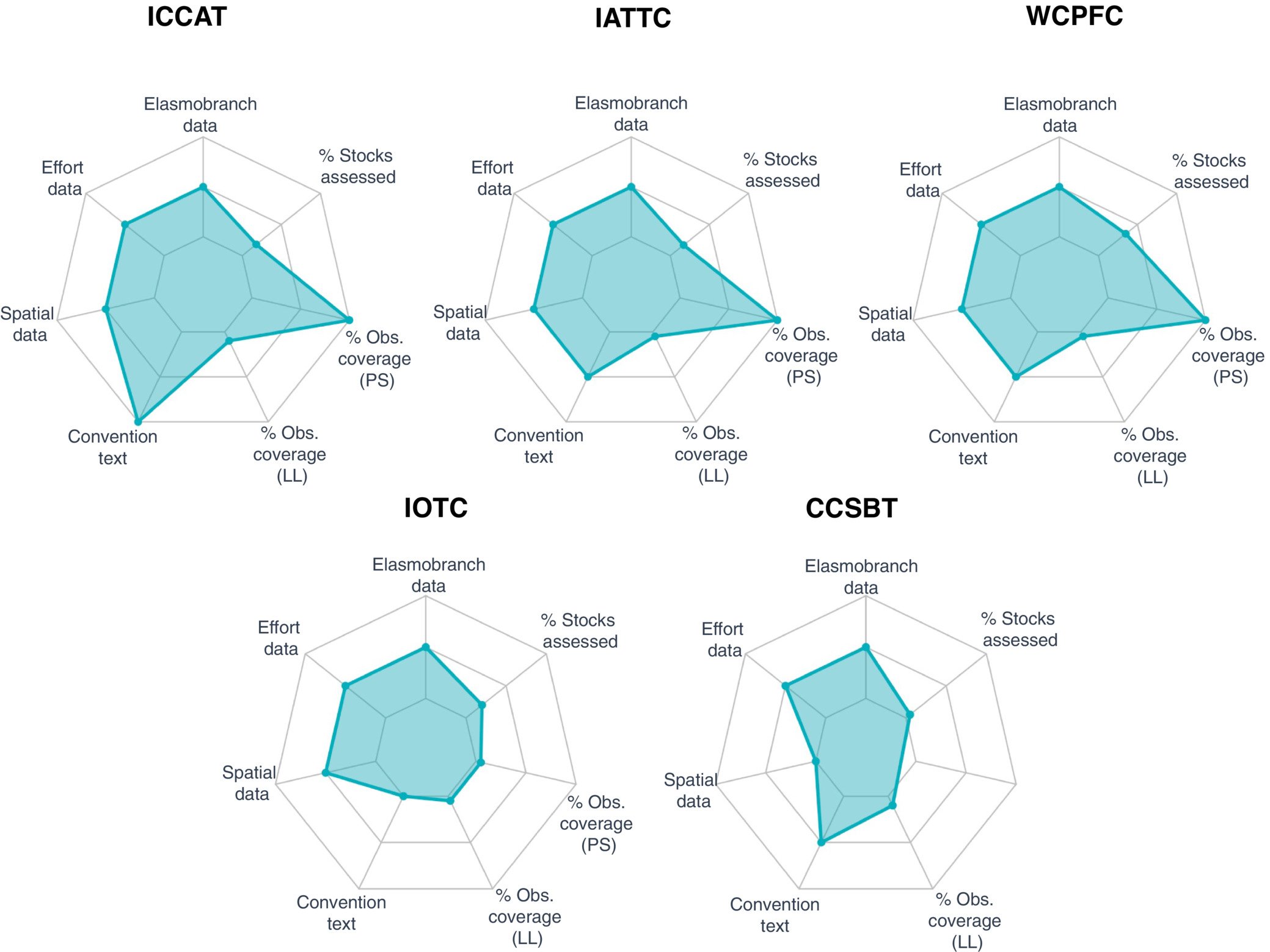Policy and transparency gaps for oceanic shark and rays in high seas tuna fisheries
October 2022
Melissa R. Cronin, Julia E. Amaral, Alexis M. Jackson, Jennifer Jacquet, Katherine L. Seto & Donald A. Croll
Keywords: Bycatch • Elasmobranch • Management • Mitigation Hierarchy • tRFMO




Summary: Marine fisheries are capturing pelagic sharks and rays as bycatch, which poses a global threat to their population. The study investigates the effectiveness of policies by the five tuna-related Regional Fisheries Management Organizations (tRFMOs) in mitigating elasmobranch bycatch, and the data and research needed to adopt new policies. Although tRFMOs have adopted 34 active policies, most policies focus on mitigating post-capture mortality and collecting data rather than avoiding or minimising elasmobranch bycatch. The study suggests a precautionary approach that involves reforms in tRFMO voting processes to facilitate the adoption of policies that limit elasmobranch catch limits and bycatch avoidance.
Abstract
“The incidental capture by marine fisheries as bycatch poses a global threat to pelagic sharks and rays. In large, industrialized fisheries that often operate in areas beyond national jurisdiction, at least 22 threatened species of pelagic elasmobranchs are caught as bycatch, representing the majority of megafauna bycatch in tuna fisheries. Here, we investigate (1) the efficacy of the current policies of the five tuna-related Regional Fisheries Management Organizations (tRFMOs) in mitigating elasmobranch bycatch, (2) data needed to better assess the amount and impact of elasmobranch bycatch and (3) the research necessary for the adoption of new policies. We found that tRFMOs have adopted 34 active policies that address pelagic elasmobranch bycatch. However, most policies (~76%, n = 26) are unlikely to avoid or minimize elasmobranch bycatch. Instead, most policies focus on mitigating post-capture mortality via remediation and requiring or encouraging research and data collection. Despite the emphasis on research mandates, we find that the existence of research was not related to policy adoption, suggesting that lack of research has not historically prohibited policymaking. Overall, we suggest that current research and data transparency, though perhaps not necessary for policy adoption, are not sufficient to adequately evaluate the population-level impacts of bycatch on many elasmobranch species in tRFMO-managed fisheries. Given these results, we recommend a precautionary approach that involves reforms in tRFMO voting processes to facilitate the adoption of binding requirements for elasmobranch catch limits, bycatch avoidance, pre- and post-capture handling and release modifications and protection of areas important to threatened pelagic elasmobranchs.”
Author Affiliations
Ecology & Evolutionary Biology Department, University of California
The Nature Conservancy
Department of Environmental Studies, New York University
Environmental Studies Department, University of California
